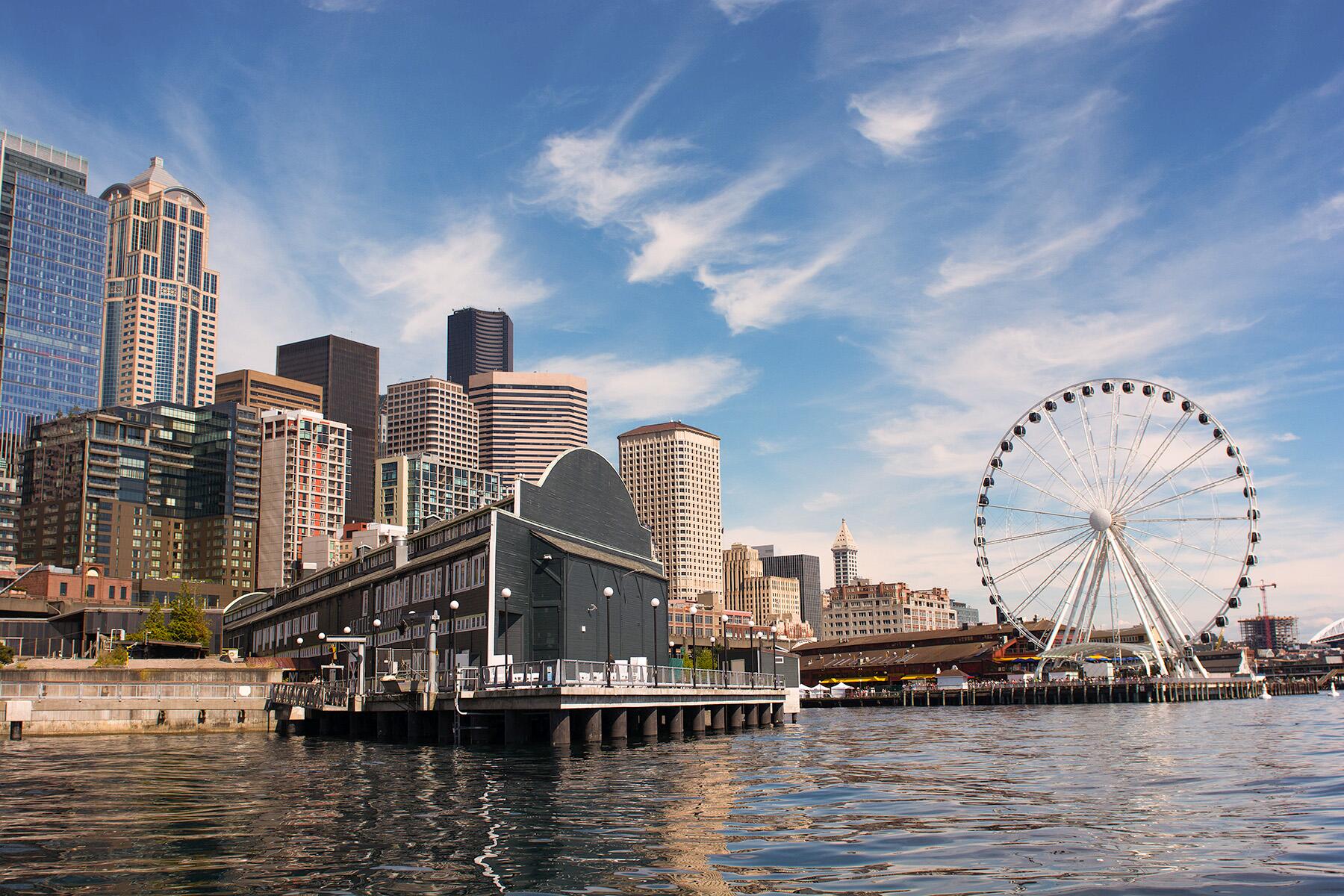The most popular destination in Mexico is just a day-trip away from North America's only Seven Wonders of the World entry. Here’s what you need to know about the “American Egypt.”
Did you know you can reach one of the Seven Wonders of the World” with little more than a two-hour car ride from one of Cancún’s iconic white beaches? Well, you can. Built in 600 A.D. by the ahead-of-their-time Mayans, Chichen Itza is an impressive ruin complex located in the dense jungle of the Yucatán Peninsula. But it’s so much more than just a popular bucket list item. Here’s what you need to understand before planning a visit.
Is It Worth It?
Yes.
Chichen Itza is tied with two other Latin American “wonders” (Machu Picchu and Cristo Redentor) as the highest-rated Wonder sites in all the world, according to tens of thousands of online visitor reviews. This is for good reason. The site itself is massive and features several “How’d they do that?” structures, in addition to naturally occurring phenomena called “cenotes” (i.e. freshwater sinkholes). Although you’ll have to navigate some pesky street vendors to get there, the 365-step El Castillo pyramid, Temple of a Thousand Warriors, Great Ballcourt, and surrounding grounds are totally worth the effort.
How Do I Get There?
Fly into Cancún International Airport, drive two hours and 15 minutes west on Highway 180D (either with a rented car or $35-50 one-way shuttle bus or cab ride), and arrive at the visitors center ticket office. Indirectly, you can also access Chichen Itza from any of the popular Riviera Maya spots, including Playa Del Carmen, Cozumel island (via ferry or cruise ship tours), or even the city Mérida to the east. Although situated in the jungle, all connecting roads are paved and well maintained.
Recommended Fodor’s Video
Why Is It Such a Big Deal?
Seeing a still-standing millennium-old structure is one thing. But seeing one with impressive scale and built-in astronomy tricks is something else entirely. Fortunately, Chichen Itza does both. Its name in Mayan loosely translates to “at the edge of magic’s well.” This is due to several reasons. First, the ancient city features two large cenotes nearby that would have provided water year-round. Secondly, the structures themselves, especially the pyramid and temple of a thousand pillars, are architectural marvels. Lastly, you can see the snake god (i.e. Kukulkan) slither in the sun along the steps of El Castillo twice a year on the spring and fall equinoxes (March 20 and September 23 respectively). That’s legitimately cool, especially for a 1,400-year-old building.
How Crowded Is It?
Moderately but not necessarily problematic. You’ll encounter crowds at the entrance and some vendor-filled sidewalks that lead to the dozen major buildings. But since Chichen Itza is two square miles, the largest Mayan city still standing, there is plenty of open space to roam and enjoy the buildings and their surroundings, even in peak travel season. Although the complex welcomes an average of 5,500 people per day, it was once inhabited by up to 50,000 Mayans, so crowds are noticeably less prevalent when compared to Machu Picchu or the Colosseum.
Do I Need a Guide?
Although it’s not mandatory, a guide is highly recommended in order to contextualize and appreciate all there is to see and understand here. Licensed guides can be hired easily at the entrance for around $35–40 dollars for a two-hour tour, or in advance for less or as part of a broader tour of the surrounding area. Additionally, there are several free or $1 audio guides online or from either the Apple or Google app stores that can be enjoyed at your own pace on your smartphone.
How Do I Get Tickets?
Tickets can be purchased in advance through a private or guided group tour or onsite for around $13 per adult. Children 12 and under are free. If driving, you can park in the official lot near the entrance for around $2 or alongside the road is free (as many do). Since credit card machines are often out-of-order or subject to a 10% surcharge, cash in Mexican pesos is always recommended.
When Is the Best Time to Visit?
Chichen Itza is open daily from 9 a.m. to 5 p.m. and best visited first thing in the morning or any time after 3 p.m. for ideal lighting and crowd conditions. It typically takes 2–4 hours to tour the complex, which is about all it should take to orient yourself and appreciate what’s on display. An all-day event this is not.
Where Can I Get the Best Photo?
El Castillo is definitely the most photogenic backdrop. Thanks to the large grass courtyard that surrounds three sides of the temple, it’s easy to capture a selfie or group photo in ideal lighting conditions and without any photobombers in the background. That said, Temple of a Thousand Warriors and its sprawling 1,000 pillars can also make for some interesting photo opportunities, as can the Sacred Cenote.
What's the Best Thing to Do Once There?
It takes several minutes to walk from the entrance to the iconic pyramid of El Castillo, which is arguably the star of the show, even if you can’t go inside it. But the pyramid isn’t the only point of interest. The Great Ballcourt rests next door and is the largest Mayan sports court. Here ancient contestants played a basketball-like game with seven pound rubber ball, after which the winners were reputedly beheaded as an honorable sacrifice for their victory.
The Warrior’s Temple (or Temple of 1,000 Pillars) lies on the opposite side of the pyramid and lives up to its name in a symmetrically beautiful way. Although you can’t walk through all 1,000 pillars, several sections are open to the public and worth a visit. The Sacred Cenote is also worth visiting, and the minor surrounding structures can be easily accessed with a little more walking.
Can I Climb the Pyramid-Looking Castle Thing?
Not anymore. Local officials closed the steep and sometimes vertigo-inducing steps in 2006, after a woman from San Diego tumbled to her death. Although the view from the top was reportedly spectacular, long queues and lots of crowds often formed as the descent is intimidatingly steep and Mayan building codes didn’t require handrails.
What's the Bathroom Situation Like?
Pretty good. There are several restrooms at the main entrance and several more behind El Castillo. Despite the large crowds, there are ample toilets to accommodate visitors and washrooms are never more than a few minutes away by foot. So there’s no need really to plan in advance for potential emergencies.
How Long Should I Stay?
At least two hours, if not three to four depending on your love for history. Anything less than two hours and you’d probably feel rushed. Anything more than three or four and you’d probably get bored. The majority of people visit Chichen Itza for a few hours before moving on to other surrounding attractions, especially the swimmable cenotes.
Is It Wheelchair Accessible and/or Physically Demanding?
Technically yes. There are wheelchair ramps to the entrance and the main pebble sidewalk leading to the courtyard, El Castillo, Great Ballcourt, and Temple of Warriors are smooth and largely accessible. Dirt sidewalks to the outlying minor structures, however, are uneven and virtually impossible for wheelchairs and should be avoided. As for clothing, Chichen Itza is humid and hot and both the ballcourt and pyramid are unshaded, so plan according. And you’ll be doing considerable walking so comfortable athletic shoes are recommended over flip-flops or formal footwear.
How Bad Are Sales Vendors?
Very. They are extremely distracting at the entrance gates, near the bathrooms, and as you walk along the vendor-approved corridors leading to major sections of the complex. Like seemingly everywhere else in Mexico, vendors are confusingly allowed inside the protected grounds of Chichen Itza and are very noisy—promising one-dollar souvenirs and blowing cat-sounding jaguar whistles at nearly every turn. That said, you can find peace and quiet at each specific temple and building structure, as vendors are forbidden from peddling their wares there.
Is There Food Nearby?
Yes, at the entrance. It’s not bad (as of January 2019), but it’s overpriced and caters more to Western tastes than local Mexican fair. If you want good and cheap and authentic, head to Polleria Los Pajaros in Piste or any other well-rated local restaurant in the town, which is just a 5-minute drive northwest from Chichen Itza along Highway 180.
What Else Should I Do in the Area?
Yucatán is world-renowned for its beaches, ruins, and cenotes, so it only makes sense to focus on all three. If more ruins are your thing, consider fanning out to Ek Balam, Coba, and Tulum, all of which are within one to two hours’ drive from Chichen Itza.
If you want to escape the heat in one of the most delightful swimming settings you’ll ever find, head to Cenote Selva Maya, Cenote Yokdzonot, Cenote Hubiku or other half dozen well-rated swimming holes. For world-class beaches, the Mayan Riviera (which includes Cancún’s, Playa Del Carmen, and Tulum) is undoubtedly worth an extended visit, not only for its white-sand and teal beaches, but also its remarkable snorkeling and scuba diving.
Where Should I Spend the Night?
While there are small, boutique hotels in and around Chichen Itza, most would probably recommend a home base in Riviera Maya, if only to conveniently access everything the peninsula is known for, namely ruins, beaches, cenotes, and marine life. For that you can’t go wrong with the top-rated Iberostar Playa Paraiso. Situated in between Cancún’s and Playa Del Carmen on a private beach, this beautiful all-inclusive features four different properties for every budget, motif, and traveler type—from families and adults-only, to discounted or luxury digs in hacienda, Spanish, or Mayan surroundings. Either way, the property is easily worth an extended stay.




